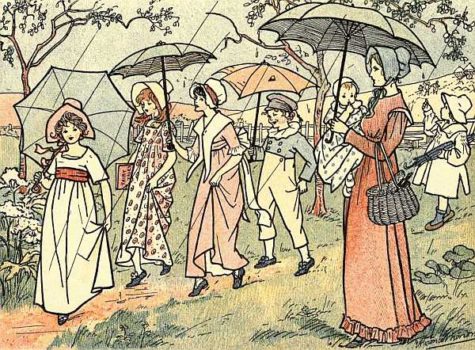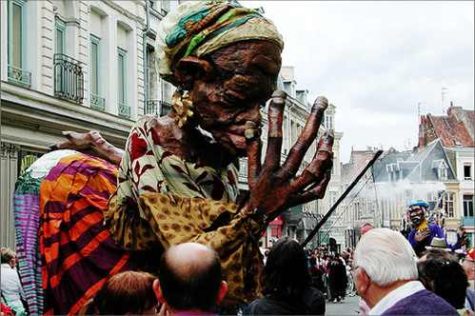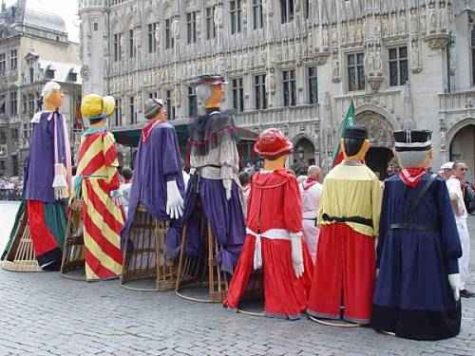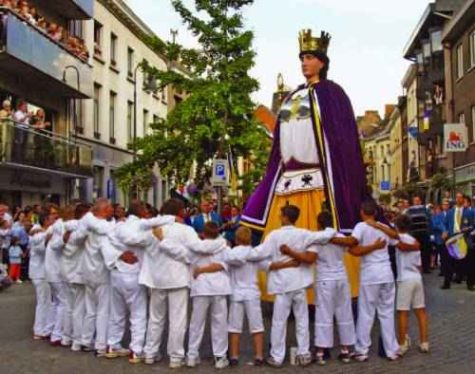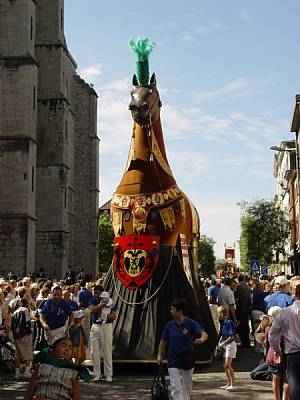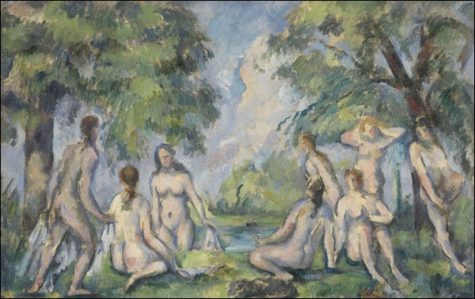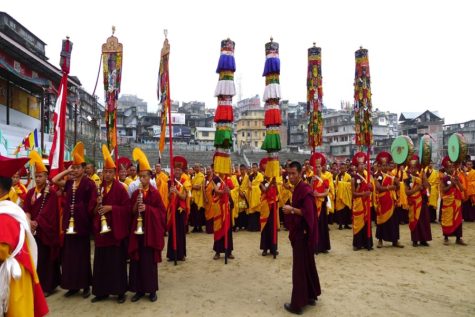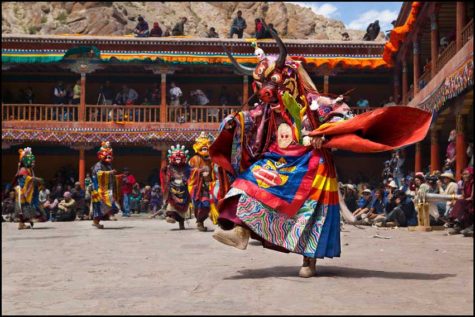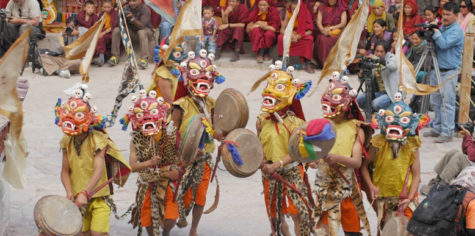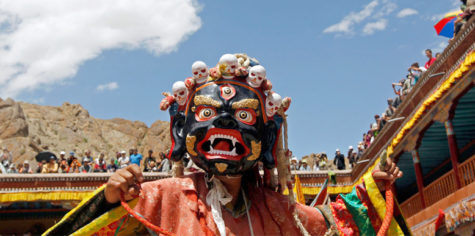Monthly Archives: July 2017
Leo is the fifth sign of the zodiac. The sun enters Leo at slightly different times each year, usually around July 22, sometimes the day before or the day after.
- Symbol: Lion
- Element: Fire
- Gemstone: Sardonyx
- Keyword: I Will
Leos are ambitious, determined, and enthusiastic. They like to do everything in a large way, and express themselves openly, honestly, and confidently. They are proud people who dislike being ridiculed or demeaned. They are generous, magnanimous, and susceptible to flattery. Their enthusiasm means that they sometimes get carried away and exaggerate or distort the truth, as they like to tell a good story. They make good leaders, as they have the ability to inspire and motivate others.
From 365 Goddess, we have this for today:
- Themes: Devotion; Strength; Sun; Magic; Passion
- Symbols: Lion; Strawberries
- Presiding Goddess: Freyja
About Freyja:
In Nordic tradition, Freyja’s name means “lady.” Generally speaking, it is her domain to care for matters of the heart. In mythology, Freyja is stunningly beautiful, a mistress to the gods, and she appears driving a chariot pulled by cats. When saddened, Freyja cries gold tears, and she wears a shining necklace (alluding to some solar associations). Many people in northern climes credit her for teaching magic to humankind.
To Do Today:
In astrology, people born under the sign of Leo are energetic and filled with Freyja’s solar aspect. And, like Freyja, they are ardent, dynamic lovers. If your love life needs a pick-me-up, Freyja’s the goddess to call on. Start with a bowl of strawberries and melted chocolate that you feed your lover. Remember to nibble passionately while biting into Freyja’s sacred food! This will digest Freyja’s energy for lovemaking. If you’re still single, eat a few berries at breakfast to internalize self-love so more loving opportunities will naturally come your way.
To improve love in other areas of your life (the love of friends, love for a job or project, etc), wear gold-toned clothing or jewelry today to emphasize Freyja’s solar powers. This will give you more tenacity, focus, and esteem for whatever you’re putting your hands and heart into.
More About the Sun in Leo:
The Sun is in Leo from approximately July 21 to August 20, depending on the year.
- Ruler: The Sun
- Modality: Fixed
- Season: Summer
- Metal: Gold
- Stone: Ruby
- Color: Orange, Gold
- Flowers: Gladiolas, Orchid, Sunflower, Lavender
- Anatomy: The heart.
- Attributes: magnanimous, generous, hospitable, caring, warm, authoritative, active, open
There’s an unmistakably regal air to Solar Leos. These are dignified—even noble—folk. Leos have a reputation for being conceited, but think again. Leos do feel important, but this generally takes the form of wanting to change the world in some way—to make the world a better place. They are generally motivated by affection for people, and often have big dreams and plans to make people happy.
Generally, Leos are hard-working. After all, they are attracted to the good things in life, and they know they have to work to get them. It is sometimes difficult to imagine Leos as go-getters if you happen to catch them in one of their languid moods. These people can sleep in, laze around, and luxuriate for long periods of time. However, when they do get to work, they do it with intensity and determination. In this way, they are not unlike their symbol, the lion.
The worst thing you can do to a Leo is accuse them of bad intentions. Displaying behavior that makes them think you don’t appreciate them runs a close second. These happy, jovial people become mighty hurt when others don’t see them for their noble intentions.
Loyal, and sometimes rather traditional, Leos are, after all, a fixed sign. They’ll hold on to situations and people for a very long time before they give up. There is an unmistakable idealism to Leo’s view of the world and the people in it. Often, Leos have a very noble inner code that they answer to. Although on the surface, Leos appear rather confident, they can actually be some of the most humble souls around. They are the first to blame themselves when something goes wrong. Once again, it’s the Leonine self-importance at work, and this characteristic works in unexpected ways. Instead of being the conceited, self-absorbed show-offs of reputation, they are usually very self-aware, self-conscious, and, yes, even humble.
Source: Cafe Astrology
St. Swithin was a beloved ninth-century bishop of Winchester, England, who requested that he be buried in the churchyard–some say to be close to the common people, whom he loved; some say so that he could enjoy God’s gift of rain for all eternity. When he died in 862, his request was honored.
About 100 years later, however, it was deemed unseemly that so holy a man should rest in a common grave. On July 15, the saint’s feast day, the people attempted to enshrine his remains in his church.
Legend has it, however, that St. Swithin caused torrential rains to fall for 40 days, until the intended transfer was abandoned. This is the source of a very old Scottish weather proverb regarding rain on July 15:
“St. Swithin’s Day if thou dost rain,
For forty days it will remain.”
Source: Almanac.com
Boryeong, South Korea: The mud trucked in to Daecheon Beach for the festival is said to have cosmetic effects, but that isn’t why 2 million or so ex-pats, locals and tourists muck it up, slathering themselves in mud while slinging beer and soju in Ziploc bags. It’s just down-and-dirty fun. There’s also mud-skiing, a mud king contest, as well as fireworks at night. Tip: take a dip before you leave.
About This Festival
Getting dirty has never been so much fun. Beauty product for some, excuse to channel their inner child for others, Boryeong Mud means many things to many people. This filthy festival involves wrestling, sliding, massages, and photo contests. The dates vary from year to year. In 2016, it was held July 16 thru July 24.
A Dirty Marketing Idea is Born
The idea for the festival began in 1998 as a promotion for the mineral-rich mud found near Boryeong, South Korea. When the manufacturers of Boryeong Mud products determined the beneficial effects of their local mud, they invited visitors to slather themselves in the stuff. The event took on a life of its own rather quickly, attracting thousands of visitors to this otherwise sleepy town annually for the beach, the warm weather, and, of course, the mud.
Things Get Dirty Fast
Fueled by word of mouth, good times and exceptional photographs of mud people, the festival has become an international phenomenon. Families picnic under beach umbrellas, toddlers splash in the kid-friendly area, and the under-30 crowd (generally traveling English teachers, members of the military, and students) are the front-and-center partiers inside an inflatable mud wonderland. Festival-goers have their pick of competitive activities like the Mr. Mud contest, mud wrestling, mud races and even a mud boot camp. Those looking for a more laid back experience can opt for mud facials, body painting, pottery demos, soap-making and lounging on Daecheon Beach.
There’s no need to worry about getting all this gooey grey mud out of your hair, either: showers are abundant and available for a modest fee, as are lockers that can be used to store a fresh and clean outfit. Rinsing off in the ocean is also an option, albeit a less effective one if you plan to impress after your mudbath. Finally, after you’ve wallowed in Boryeong’s thick gray ooze, you can pick up some of the local beauty products, including mudpacks, mud shampoo, mud soap, mud sunblock – remember, this was the original intention of this festival!
More Than Just Mud
Although the main attraction is, of course, the mud, Boryeong features an impressive entertainment lineup as well. Pop and hip-hop performers from around the world affirm its status as an international event, providing an eclectic soundtrack to the wet and wild madness. Don’t miss the huge global rave on the evening of the closing ceremonies, or Friday’s Korean b-boy show. Keep your eye out for opening and closing night fireworks, as well as parades and other cultural performances during the week.
In the end, the thing that sets Boryeong apart is the mud play. The spirit of conviviality across cultures and ages is a function of the anonymity everyone experiences while covered in mud. As Jae-Sang Lee, Director of Korea Tourism Organization, says, “The most distinctive point of the Festival is to create a united place where people from all over the world come together, meet and interact with strangers and are able to break down walls of age, nationality, race and have fun together and leave with memories and new friends.” All are one under the mud.
Sources:
Everfest
Samuitimes
Mud Festival – The official page
Knut the Reaper is possibly the original Grim Reaper, complete with the appearance of a skeleton clad in dark flowing robes wielding a scythe. In Norse mythology he enjoys commemoration on July 10 with the goddesses (Hel or Hela, Holda and Skadi) of the shades and underworlds Helheim and Niflheim.

Day of Knut the Reaper (July 10) is a centuries-old festival in which Wickerwork giants are paraded through the city streets of Douai, France to drive away evil spirits.
Traditional processions of huge effigies of giants, animals or dragons encompass an original ensemble of festive popular manifestations and ritual representations. These effigies first appeared in urban religious processions at the end of the fourteenth century in many European towns and continue to serve as emblems of identity for certain Belgian (Ath, Brussels, Dendermonde, Mechelen and Mons) and French towns (Cassel, Douai, Pézenas and Tarascon), where they remain living traditions.
The giants and dragons are large-scale models measuring up to nine metres in height and weighing as much as 350 kilos. They represent mythical heroes or animals, contemporary local figures, historical, biblical or legendary characters or trades. St. George fighting the dragon is staged in Mons; Bayard, the horse from the Charlemagne legend, parades in Dendermonde; and Reuze Papa and Reuze Maman, popular family characters, parade at Cassel.
The performances, often mixing secular procession and religious ceremony, vary from town to town, but always follow a precise ritual in which the giants relate to the history, legend or life of the town.
July 10th is Lady Godiva Day. I’m sure we’re all familiar with the story – but here it is again:
The Countess Godiva devoutly anxious to free the city of Coventry from a grievous and base thralldom often besought the Count, her husband, that he would for love of the Holy Trinity and the sacred Mother of God liberate it from such servitude. But he rebuked her for vainly demanding a thing so injurious to himself and forbade her to move further therin.
Yet she, out of her womanly pertinacity, continued to press the matter insomuch that she obtained this answer from him: “Ascend,” he said, “thy horse naked and pass thus through the city from one end to the other in sight of the people and on thy return thou shalt obtain thy request.”
Upon which she returned: “And should I be willing to do this, wilt thou give me leave?”
“I will,” he responded.
Then the Countess Godiva, beloved of God, ascended her horse, naked, loosing her long hair which clothed her entire body except her snow white legs, and having performed the journey, seen by none, returned with joy to her husband who, regarding it as a miracle, thereupon granted Coventry a Charter, confirming it with his seal.
From the Flores Historiarum by Roger of Wendover
Celebrated by the residents of Nunavut, Canada, on July 9 each year, Nunavut is a time to honor the efforts of those who helped to bring this territory into being. For many years, the Inuit had worked toward forming their own territory. On July 9, 1993, the Nunavut Land Claims Agreement Act took effect, and Nunavut was established on April 1, 1999. Nunavut Day was declared an official government holiday in 2001.
The day is traditionally celebrated with live music, barbecues, the wearing of traditional dress, traditional foods are served, and the community sponsors activities such as concerts, craft fairs, and contests, including seal skinning and duck plucking.
From: Almanac.com
In ancient Rome on July 7th, the Feria Ancillarum or Festival of Handmaids was held. This was the maids’ day out, when the maids of Rome were beyond the control of their mistresses.
Also known as the Caprotinae, when free and slave women made offerings to her beneath wild fig trees outside Rome’s city limits, this feast day was in honor of Juno Caprotina, Juno of the Wild Figs. Fig trees were venerated, with feasting beneath them in honor of Caprotina, an aspect of the Goddess Juno.
In this aspect of the goddess, Juno is seen as dressed in goatskins and driving a chariot pulled by goats. Enslaved women made up a large proportion of her devotees.
Poplifugia was a Roman festival on July 5. It means “flight of the people.” The origin of Poplifugia is not known. Two explanations are given by H.H. Scullard:
- the people fled when Romulus disappeared from mortal sight during a tempest
- the flight of the Roman people after the sack of Rome by the Gauls
There doesn’t seem to be much information about this festival. It took a fair amount of digging, but I was able to come up with a little something more about the Poplifugia. Here’s what I found:
The Festivals of the Poplifugia and the commemoration of Romulus are celebrated on July 5 and July 7, respectively. These two festivals are thought to be a continuation of the same festival, as it was customary for the Romans to have festivals that ran on several days but skipped the even-numbered days because they were considered ill-omened in Rome.
There was also a Rumilia festival that might have been celebrated at the same time.
Although much has been written on this topic, it is not well understood, because the Romans had an extremely conservative religion, in which they continued to do rituals, but they did not remember what they were for, and much of the information about their religion has been lost or deliberately destroyed.
The Poplifugia was a ritual in which someone was chased out of the Regia, or “King’s House”, actually the formal residence of the Sacred King of Rome.
This early July date corresponds approximately to the time of slaughter of livestock in Mediterranean countries which have a dry season during most of the summer during which there is no fodder for cattle.
Its name which is interpreted to mean, “The Flight of the People”, may refer to the sacking of Rome by the Gauls in 390 BC. However, it is impossible not to notice that the word popli- in Poplifugia, and which is interpreted as meaning `people’ is very similar to the word popa which is the Latin word for the attendant who actually slaughtered the animals at a sacrifice, that is, it was the job of the popa to hit the animal in the forehead with an ax which stunned it. Someone else cut the animal’s throat so that it bled to death, and the whole operation was organized by a priest who spoke the religious formulas and directed everyone on what they should do.
If the festival was originally called a *Popafugia (“fleeing of the popa or axeman”), it would be even more completely in line with the Bouphonia, as it was performed in classical Greece. Nevertheless, the connection has been made between the Poplifugia and the Greek Bouphonia and both are thought to embody the myth of the killing of the first cow, which makes up the Indo-European creation myth, known as the Primal Cow Creation Myth.
Found at: Associated Content
A great recipe to celebrate Independence Day in the United States:
- ¾ cup sour cream
- 1/4 tsp. coarse black pepper
- 1 tsp. white sugar
- 1 tbsp. rice wine vinegar
- 1 tsp. fresh chopped dill
- 1/8 tsp. fresh grated lemon peel
- 1/4 tsp. finely grated red onion
- salt
- 1 cucumber
- 3 garden fresh red tomatoes
- 10 borage flowers
Combine all the ingredients except for the tomatoes and flowers. Slice tomatoes and arrange them, overlapping, around the edge of a serving platter. Mound the cucumber mixture in the center of the platter, just covering the inner edge of the tomatoes. Chill well, and place the borage flowers decoratively on the salad just before serving.
Serves 4 to 6
Recipe by Di-Di Hoffman
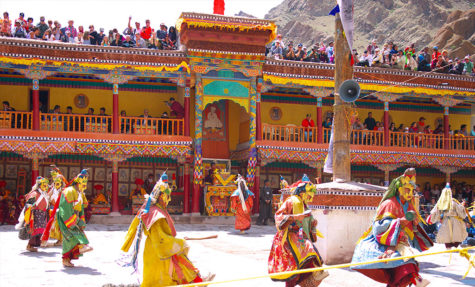
After a tough winter the chills have become bearable, the Hemis monastery opens its doors to enjoy festivities. The date every year changes as it is celebrated every year on the tenth day of the Lunar calendar of the Tibetan month. The dates for this festival vary from year to year. in 2017 it falls on July 3 and 4.
The festival highlight is the Dance performances and plays by masked Lamas. The masked dance represents the good prevailing over evil. The participants of the spellbinding performance are dressed in vibrant costumes and bright masks. Every mask has its own place in Tibetan and Buddhist legends. Signifying aspects of good and evil, they are designed as humble, divine faces, animals, skeletons and numerous frightful figurines. Dancers can be seen with slow dance movements and fanciful expressions.
The masked dance performance is created on music medley of sounds of drums, trumpets and cymbals. The famous Padmasambhava dance, the highlight of the dance shows the victory of the ruta demons. The dances are spellbinding as the divine is represented and its said to be purifying your soul.
Here are some video clips:
Origins
Based on Tibetan and Buddhist Legends, Hemis Festival is said to have its origins back in 8th Century. Lord Padmasambhava also known as Guru Rimpoche is believed to be the local savior who banished demons and evil spirits. The spiritual leader is said to have introduced of Tantric Buddhism in the Himalayan Kingdom. Combining the teachings of Buddhism and Tibetan culture, a new way was established where life was entwined with prayers, austere life and a higher calling.The birth of Guru Rimpoche also known as Lord Padmasambhava is the occasion which is celebrated during Hemis Festival. The spiritual leader is conferred as the local savior.
Celebrations
The mask dance performance is the main attraction of the Hemis Festival
Ever seen Lamas dance? Well here they do, in their tell tale burgundy and mustard yellow attires. The old and the young gather to partake and witness this performance, the re-telling of their ancient mythological stories and folklore. The real spectacle is provided by the masked performers wearing horns, multicolored ribbons and brocade clothes that shine in the bright July sun. And believe me, some of those masks are more expressive than us.
The Chams are a part of the Tantric tradition performed to a cacophony of indigenous musical instruments. The music starts on a slow note and quickly picks up pace as the narrative becomes intense. It keeps building up to a hair raising climax when the leader of the Black Hat dance strikes down the devils idols (made of dough) in combat victory. The message is one that been around for eternity, that good prevails over evil. Its execution through the masked dance performance is what takes your breath away.
Every 12th year known as the Tibetan Year of the Monkey, Hemis Monastery Festival takes an auspicious turn.The unfurling of the largest Thangkha (12 metres) from the second floor of the monastery for the world to see happened in 2016, and won’t happen again for another 12 years. The scripture is worth seeing as it’s so delicately preserved.
Inside the monastery and outside during the festival check out the stalls. From delightful tastes of the mountain Kingdom to unique handicrafts of the region the sight are wonderful. Residents of remote villages, adventure seekers, photographers and travelers make their way here to be a part of the festival.
Other Ways To Celebrate:
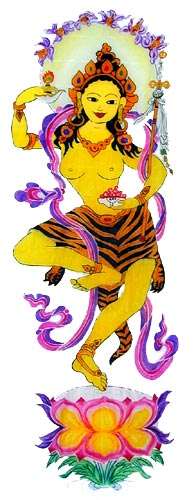 I have been enjoying the book, 365 Goddess. In this book, the author explores a different goddess every day in the context of rituals, feast days, holidays, festivals, and celebrations from around the world. Today is the celebration is the Hemis festival.
I have been enjoying the book, 365 Goddess. In this book, the author explores a different goddess every day in the context of rituals, feast days, holidays, festivals, and celebrations from around the world. Today is the celebration is the Hemis festival.
This festival includes a ritual play in which all manner of mythic creatures are poised against the Tibetan lamas, symbolizing the battle between good and evil. bells, censers, cymbals, and drums draw in positive magic, banish evil, and win the fight for goodness.
The goddesses assigned for this day are the Ratna Dakinis. In Tibet, these goddesses rule over all gestures of goodness and compassion, which naturally help improve karma. Collectively, their names mean “inestimable,” showing us the true power and value in acts of kindness that are driven by a pure heart.
The book also includes ideas for simple magical rituals and/or easy spells that are in keeping with the theme for the day. And so we find that for the Hemis festival the themes are the: banishing; victory; kindness; karma, and the color yellow.
For today, the suggestions are to wear something yellow, and also try to keep the Ratna Dakinis in mind so that your actions will be gentle and filled with kindness. You could also, using yellow ribbons, string together a collection of small bells for a Ratna Dakinis house amulet. Hold these in your hand and empower them by saying:
Let your goodness ring, let purity sing,
with each wind Ratna Dakinis’ blessing bring!
Hang these where they will catch the wind regularly, releasing the magic.
Other ideas include the following:
Do something nice for someone who’s been feeling blue lately, “just because”. Give them some yellow flowers, offer a hug, or maybe make an extra bell amulet for them too! This boosts good karma, makes both of you feel good, and invokes Ratna Dakinis’ blessings through thoughtfulness.
Note: This post was put together by Shirley Twofeathers, you may repost and share it only if you give me credit and a link back to this website. Blessed be.



